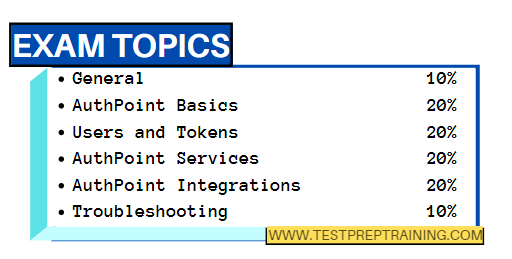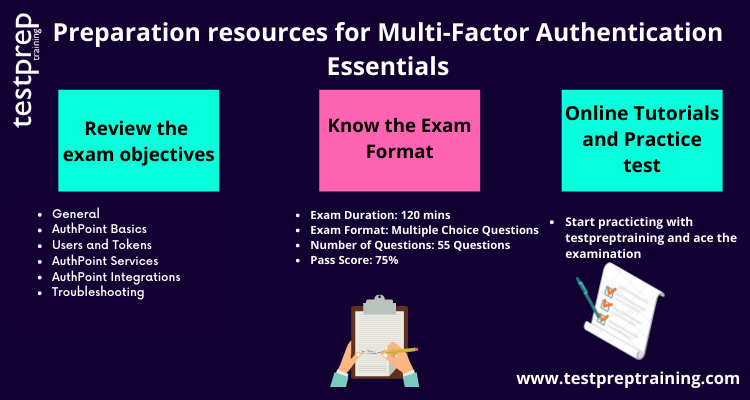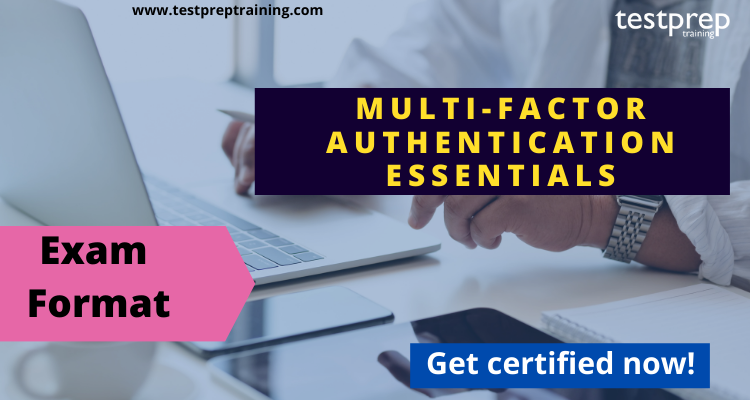Multi-Factor Authentication (MFA) is a security method that asks users for more than one type of verification before allowing access to a system or service. With this extra layer, MFA makes it tough for attackers to get into sensitive data or resources without permission. This adds a boost to security and lowers the chances of unauthorized access to important information.
- Types of factors: MFA involves the use of two or more of the following factors for authentication:
- Something you know (such as a password or PIN)
- Something you are (such as biometric information like fingerprints or facial recognition)
- Importance of diversity: The factors used should be diverse to increase the security level. For example, using a password and a fingerprint scan is more secure than using two different passwords.
- Implementation: MFA can be implemented at different levels, such as at the application level or the operating system level. It can also be implemented using various methods, such as through text messages, push notifications, or dedicated MFA apps.
- Accessibility: MFA should be accessible to all users, including those with disabilities. Alternative forms of authentication, such as voice recognition or one-time codes generated by an app, should be available.
- Regular updates: MFA systems should be regularly updated to ensure they are up-to-date and provide the highest level of security.
- Training and education: Users should be trained on how to use MFA and the importance of its implementation. It’s essential to keep the users informed and educated on the best practices of MFA.
In summary, MFA is an essential security measure that helps to enhance the security of sensitive data and systems. Its implementation should be diverse, accessible, and regularly updated, and users should be trained on its proper use.
Exam Format
The exam format may vary depending on the certification, but common formats include:
- Multiple choice questions: This format is widely used in IT security certification exams. Test-takers get a question and a list of answers, and they have to pick the right one from the options provided.
- Performance-based questions: This format requires candidates to perform specific tasks or solve problems using a simulated environment or real-world scenario. These questions often test the candidate’s practical knowledge and ability to apply concepts and techniques.
- Essay questions: This format requires candidates to write an essay in response to a question or prompt. This format is less common for IT security certification exams, but may be used for more advanced certifications.
In addition to the exam format, many IT security certifications require candidates to meet certain prerequisites, such as completing training or having a certain amount of work experience in the field. It’s important to research the specific requirements for the certification you are interested in pursuing.
Multi-Factor Authentication Essentials: Glossary
Here are some key terms related to Multi-Factor Authentication (MFA):
- Authentication: The process of verifying the identity of a user or device.
- Factor: A type of authentication method used to verify identity, such as something you know (password), something you have (smart card), or something you are (biometric).
- Two-factor authentication (2FA): It’s a way of proving your identity that needs two different pieces of information before letting you into a system or account.
- Multi-factor authentication (MFA): An authentication method that requires two or more factors to be presented in order to access a system or account.
- Biometric authentication: An authentication method that uses physical characteristics, such as fingerprints, facial recognition, or voice recognition, to verify identity.
- Token: A physical device, such as a key fob or smart card, used as a factor in authentication.
- One-time password (OTP): A temporary password or code that is generated for a single use and typically used as a factor in authentication.
- Push notification: A notification sent to a mobile device that prompts the user to approve or deny access to a system or account.
- Phishing: A type of cyber attack in which an attacker attempts to trick a user into divulging sensitive information, such as login credentials or OTPs.
- Social engineering: A type of cyber attack in which an attacker uses psychological manipulation to trick a user into divulging sensitive information.
These terms are essential in understanding the concepts related to MFA and the importance of securing systems and accounts.
MFA Key Concepts
To pass the Multi-Factor Authentication Essentials certification exam, candidates need to grasp important concepts such as:
AuthPoint Knowledge
- First, Resource configuration
- Group and user configuration
- LDAP and RADIUS integration
- Logon App
- Troubleshooting
General Authentication and Security Knowledge
- With a focus on LDAP
- RADIUS
- Learning SAML
Since you understand the basics regarding the Multi-Factor Authentication Essentials Exam. However, if you have any queries regarding the exam details and policies or course outline, you can always check out the Multi-Factor Authentication Essentials tutorial.
Multi-Factor Authentication Essentials Course Outline
The WatchGuard Multi-Factor Authentication Essentials Exam evaluates the candidate’s knowledge of the categories in the list. We will learn and understand the important areas that will be useful during exam preparation.
Course Outline for Multi-factor Authentication Essentials Certification Exam was updated in March, 2021.

Topic 1: General
In this the candidates will understand the basic multi-factor authentication concepts that are not unique to AuthPoint. The sections include:
- MFA basics (Watchguard Documentation: Quick Start — Set Up AuthPoint)
- Distinguished names (Watchguard Documentation: Configure Active Directory Authentication)
- Active Directory tools (Watchguard Documentation: Configure Active Directory Authentication)
- SAML roles (Watchguard Documentation: Configure SAML Single Sign-On)
Topic 2: AuthPoint Basics
This will help candidates to understand how to set up AuthPoint. This include sections:
- AuthPoint Gateway (Watchguard Documentation: About Gateways)
- Resources of AuthPoint (Watchguard Documentation: AuthPoint Deployment Guide, Configure MFA)
- AuthPoint authentication policies
Topic 3: Users and Tokens
This provides understanding of how to set up AuthPoint. The sections are:
- AuthPoint external identities
- LDAP synchronization
- LDAP user management
- Hardware tokens and token management
Topic 4: AuthPoint Services
It will help in learning and understanding how to set up AuthPoint. The section in this are:
- Logon App setup
- Also, Logon app resources (Watchguard Documentation: Configure MFA for a Computer or Server)
- Logon app MFA options
- IdP portal resource configuration
- SAML and IdP portal integration
Prepare for the exam using the Multi-Factor Authentication Essentials Study Guide!
Topic 5: AuthPoint Integrations
This provides understanding and knowledge of configuring RADIUS and SAML authentication. It include:
- RADIUS communication
- RADIUS client resources
- Network location policy objects
- SAML resource configuration
- SAML applications
Topic 6: Troubleshooting
This provides methods to troubleshoot the AuthPoint. The sections in this include:
- User authentication (Watchguard Documentation: User Authentication, User Authentication Steps)
- LDAP synchronization (Watchguard Documentation: Sync Users from Active Directory or LDAP)
- AuthPoint Gateway (Watchguard Documentation: About Gateways)
- RADIUS client (Watchguard Documentation: Configure RADIUS Server Authentication, RADIUS Authentication)
Multi-Factor Authentication Essentials Exam Tips and Tricks
Preparing for the Multi-Factor Authentication Essentials exam can be daunting, but with the right tips and tricks, you can improve your chances of success. Here are some tips to help you prepare for the exam:
- Familiarize yourself with the exam format: The Multi-Factor Authentication Essentials exam is typically a multiple-choice exam. Understanding the format of the exam can help you prepare and feel more confident on exam day.
- Understand the exam objectives: Review the exam objectives to ensure that you understand the content that will be covered on the exam. The exam objectives provide a guide for what you need to study.
- Review key concepts and definitions: Be sure to review key concepts and definitions related to MFA, such as the types of authentication factors and MFA deployment models.
- Practice with sample questions: Practice with sample questions to familiarize yourself with the exam format and the types of questions that will be asked.
- Use study materials: Utilize study materials such as books, online courses, and study guides to reinforce your knowledge and understanding of MFA concepts.
- Take breaks and manage your time: Taking breaks and managing your time effectively can help you avoid burnout and stay focused during your study sessions.
- Focus on areas of weakness: Find the areas you need to get better at and concentrate your study efforts there.
- Stay up-to-date on industry developments: Stay up-to-date on industry developments related to MFA, such as new technologies and regulations.
- Stay calm and focused during the exam: Remember to stay calm and focused during the exam. Read each question carefully and answer to the best of your ability.
By following these tips, you can improve your chances of success on the Multi-Factor Authentication Essentials exam. Good luck!
Multi-Factor Authentication Essentials Study Guide
Having a Study Guide is a crucial part of getting ready. With the right study materials and resources, you’re bound to do well in the exam. There are plenty of books, guides, and other helpful materials online to enhance your preparation. To assist you, we’ve gathered some resources you can check out. Following this guide will ensure you grasp and comprehend all the exam objectives. We’re offering you the top learning materials to ace the exam, along with a detailed description to help you get ready.

Online Tutorials
The Multi-Factor Authentication Essentials Exam Online Tutorials boost your understanding and give you a deep dive into the exam concepts. They not only go over exam details and policies but also provide in-depth information about the examination.

Expert Corner
When you begin your preparation journey, it becomes essential to review all exam objectives. Also, reviewing the exam objectives will leave no space for confusion in your head and you can focus on your preparation. Exam objectives can help you strengthen the modules and the respective subtopics. Besides, you must also join a community that will help you connect with like-minded people.
The final step to success is to practice what you have learned. Additionally, taking a practice test is a great way to diversify your study strategy and ensure the best possible results for the real thing. Moreover, you must try Multi-Factor Authentication Essentials practice exam test that will help you evaluate and prepare better.


